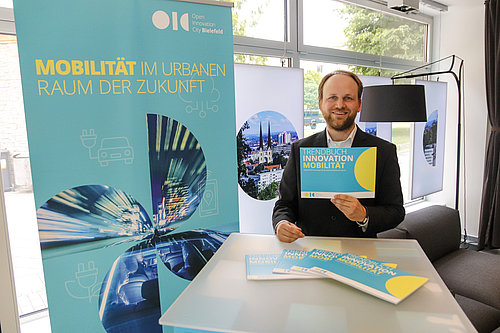News
The challenge of mobility change: How are our cities changing? Open Innovation City publishes "Trend Book Innovation - Mobility
A quick glance at a city is enough to see what a formative role mobility plays in its construction as well as its change over time: roads, rails and stops form urban lifelines. Means of transport such as cars, buses, streetcars and bicycles shape the urban landscape.
Just as the dynamization of production, commerce, and human interactions have transformed mobility, and thus cities, over the past centuries, major changes are again on the horizon: Due to pollution, noise, overcrowding, increasing resource scarcity, and other problems, urban spaces need a transformation in mobility. Climate change in particular, to which the mobility sector is a major contributor, is forcing rapid action on this issue.
To see what challenges cities are currently facing, the Open Innovation City research project has developed the "Trend Book Innovation - Mobility". In it, five key areas are identified where significant changes can be seen:
- Sustainable Mobility;
- Autonomous mobility;
- Smart mobility;
- Inner-city mobility;
- Urban-rural mobility.
"Each of these areas is described in the Trend Book. It also lists a number of pioneering examples from German and European cities. Ever heard of the Ottobahn in Munich? Of the ITS Factory in Tampere? The Ghent Circulation Pan? Line e-car sharing in Borgholzhausen?" is how Dr. Mirko Petersen, research associate in the project, describes the new publication.
All these examples from very different places show how mobility changes have already begun to shape urban spaces or could shape them in the future: More electric charging stations instead of fossil fuel stations, more spaces for greening and leisure activities instead of car traffic, and more sensors for communication between vehicles and infrastructure. "To adapt to the new mobility era, cities need solutions that take into account their specific circumstances. Therefore, it will very much depend on the local shaping of the mobility transition by politics and administration. Examples from other cities can provide some orientation. In the end, however, specific solutions need to be developed - in dialog with urban society," Petersen concludes.
The "Trend Book Innovation - Mobility" can be downloaded here free of charge. Alternatively, the print version is also available from the Innovation Office. Interesting facts about Future Mobility can be found here.
